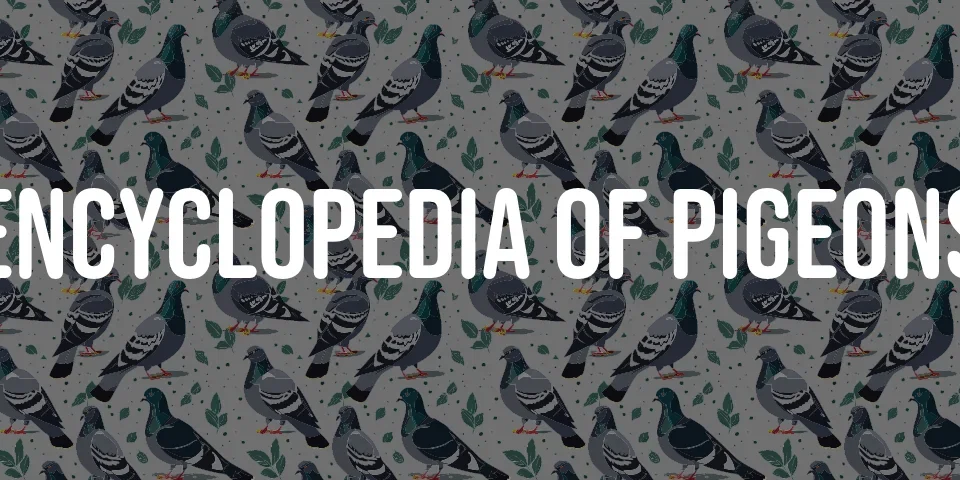The Ostrava Bagdad pigeon is a distinctive and rare breed that has captivated pigeon enthusiasts around the world with its unique appearance and fascinating history. Originating from the city of Ostrava in Moravia, part of Czechoslovakia, this breed has a rich heritage and has been bred since the 1880s. It is known for its exhibition qualities and has a lineage that includes several notable breeds such as the Nuremberg and French Bagdads, English Carrier and Dragoon, Coburg Lark, and a frilled Owl. This encyclopedic entry aims to provide a comprehensive overview of the Ostrava Bagdad pigeon, detailing its origin, physical characteristics, care requirements, and other interesting facts.
The Ostrava Bagdad pigeon is an exhibition bird that stands out due to its tall stature, hard feathering, powerful wings, and distinctive ornaments such as a long vertical neck frill and a prominent eye cere and upper beak wattle. Its unique appearance, coupled with its rich history, makes it a prized possession among pigeon breeders and enthusiasts.
Origin and History
The Ostrava Bagdad pigeon originated in the city of Ostrava, located in Moravia, a region in Czechoslovakia. The breed has been developed since the 1880s, making it a breed with a long and storied history. It was introduced into the United States in 1950 by Dr. Lynn E. Hummel of Columbia, Missouri, and has since been bred by a few dedicated individuals.
Table: Key Data on Ostrava Bagdad Pigeon
| Characteristic | Detail |
|---|---|
| Origin | Ostrava, Moravia, Czechoslovakia |
| Introduction to the US | 1950 |
| Ancestry | Nuremberg and French Bagdads, English Carrier and Dragoon, Coburg Lark, Frilled Owl |
| Average Weight | Cocks: 22 to 23 ounces; Hens: 20 to 21 ounces |
| Colors | Black, red, yellow, white; blue with black bars; white with red and yellow bars; laced in blue, red, and yellow |
| Special Features | Clean-legged, plain-headed, inverted breast frill, gullet under chin, prominent eye cere and beak wattle |
Physical Characteristics
The Ostrava Bagdad pigeon is known for its exhibition qualities and has several distinctive physical characteristics:
- Size: It is a large breed, with cocks weighing an average of 22 to 23 ounces and hens weighing 20 to 21 ounces.
- Feathering: The bird has hard feathering with powerful wings and wing butts. It also features a long vertical neck frill, contributing to its unique appearance.
- Ornaments: This breed is clean-legged and plain-headed but is distinguished by its inverted breast frill, gullet under the chin, and prominent eye cere and beak wattle.
- Colors: The Ostrava Bagdad comes in self-colors of black, red, yellow, and white; blue with black bars; white with red and yellow bars; and laced in blue, red, and yellow, with white flights and tail.
Care and Breeding
Breeding and caring for Ostrava Bagdad pigeons require attention to detail and adherence to specific requirements to ensure the health and well-being of the birds. The following seven steps are essential for successful pigeon breeding:
- A dry house protected from rain or snow.
- Separate houses for mated pairs and odd birds.
- A flypen that dries out easily, if required by the breed.
- A suitable feed ration protected from contamination.
- A suitable mineral ration protected from contamination.
- Water suitable for human consumption protected from contamination.
- Suitable nesting materials.
Failure to adhere to these requirements can lead to health issues and breeding difficulties.
Interesting Facts
- The Ostrava Bagdad pigeon’s ancestry includes a diverse range of breeds, highlighting the extensive breeding efforts to develop this unique bird.
- Despite its rarity, the Ostrava Bagdad has a dedicated following among pigeon breeders and enthusiasts, particularly those interested in exhibition birds.
- The introduction of the Ostrava Bagdad to the United States by Dr. Lynn E. Hummel marks a significant moment in the breed’s history, expanding its presence outside of Europe.






